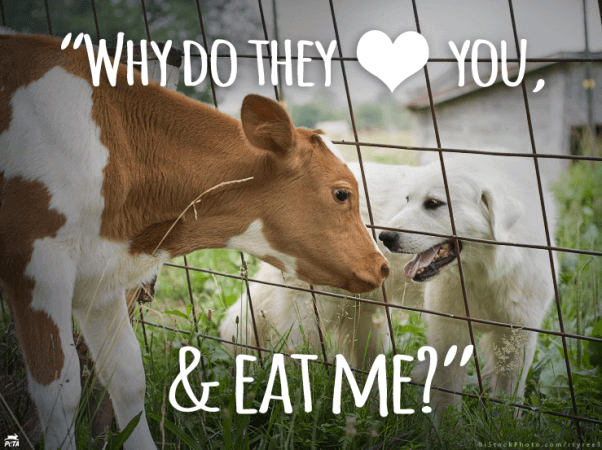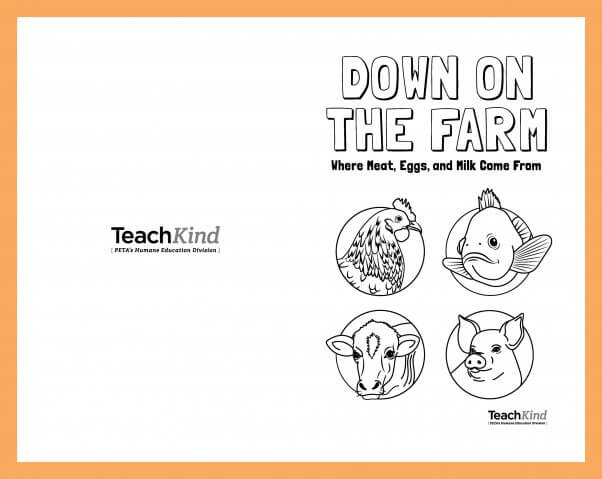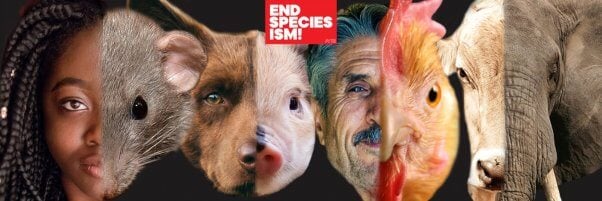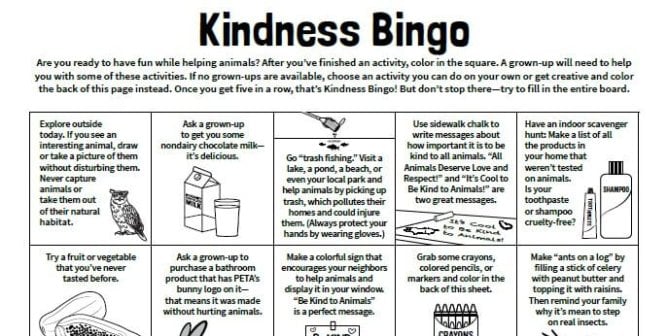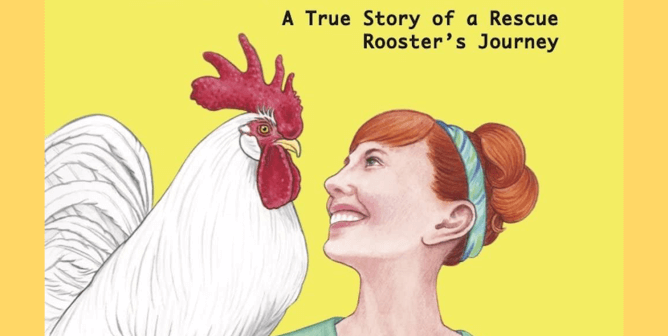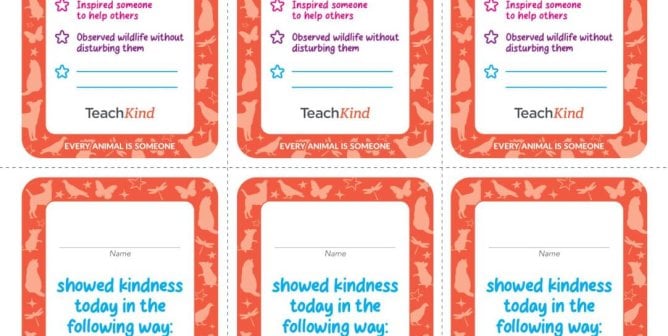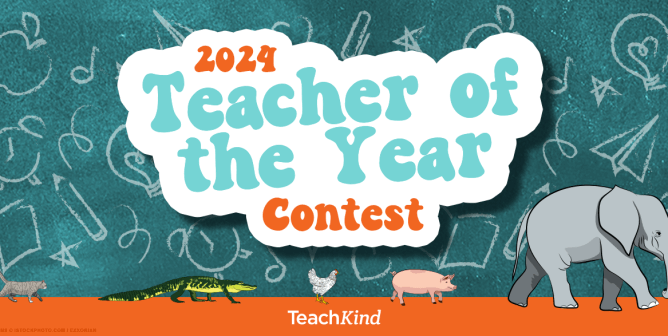Unlearning Speciesism: A Lesson in Media Literacy
From the time we’re young, most humans are conditioned to view certain species as worthy of care and compassion and others as unworthy—all based on arbitrary human preferences. Intentionally or not, parents, teachers, the media, and other influences send children the message that puppies and kittens are friends, cows and chickens are food, and rats and mice are pests. Most children are also taught that human desires, needs, and interests always trump those of any other species. This is called speciesism, the misguided belief that one species is more important than another, and it results in all kinds of negative consequences.
But although most of us were taught to think that way, speciesism can also be unlearned. After all, we aren’t born with an innate understanding of this human-made hierarchy of species. Speciesism is a social construct, much like racism, sexism, ableism, homophobia, and other harmful forms of discrimination designed to benefit those in power. In other words, through education, we can teach ourselves and our students to recognize and reject speciesism, starting with the media we consume. Use the following lesson to help students in grades 6 through 12 unlearn speciesism and acknowledge animals’ rights and to address the following Common Core Learning Standards for Speaking & Listening:
Grades 6–8
- CCSS.ELA-LITERACY.SL.6.2 Interpret information presented in diverse media and formats (e.g., visually, quantitatively, orally) and explain how it contributes to a topic, text, or issue under study.
- CCSS.ELA-LITERACY.SL.7.2 Analyze the main ideas and supporting details presented in diverse media and formats (e.g., visually, quantitatively, orally) and explain how the ideas clarify a topic, text, or issue under study.
- CCSS.ELA-LITERACY.SL.8.2 Analyze the purpose of information presented in diverse media and formats (e.g., visually, quantitatively, orally) and evaluate the motives (e.g., social, commercial, political) behind its presentation.
Grades 9–10
- CCSS.ELA-LITERACY.SL.9-10.2 Integrate multiple sources of information presented in diverse media or formats (e.g., visually, quantitatively, orally) evaluating the credibility and accuracy of each source.
Grades 11–12
- CCSS.ELA-LITERACY.SL.11-12.2 Integrate multiple sources of information presented in diverse formats and media (e.g., visually, quantitatively, orally) in order to make informed decisions and solve problems, evaluating the credibility and accuracy of each source and noting any discrepancies among the data.
If you’re teaching virtually, students can still complete the activities using popular online conferencing tools like Zoom or Skype. If these tools aren’t available to you, you could have students respond to the discussion questions in an online forum, such as Google Classroom. Designate a time frame during which students are to post their responses. Then, have them give a thoughtful reply to at least three of their classmates’ posts. Continue reading for more tips on adapting this lesson for distance learning.
Warm-Up
Have students watch the following video of a young girl explaining to her mother why she refuses to eat animals.
Use these questions to discuss the video as a class:
- What are some of the reasons why the girl refuses eat animals? Answer: She says she doesn’t want to eat them “because they’re animals and I like animals.” She later says, “I know [humans] like to eat animals … but that’s not nice.”
- What is the girl’s response when her mother asks what she’ll do if she misses “eating chicken and meat”? Answer: She emphatically says, “I don’t miss eating chicken and meat.”
- What is the girl’s response when her mother asks her if she’ll eat fish? Answer: She asks if fish are animals, to which her mother says yes. The girl then says, “I won’t eat [them], either.”
- Why do you think the girl is so upset? Do you remember when you first learned that animals were killed for food? How did it make you feel? Answer: The girl feels empathy* for animals and doesn’t want to participate in hurting them—she hadn’t realized that eating meat causes animals to suffer and die, so she’s upset upon learning this. Answers to the remaining questions will vary based on student experience, but encourage students to try and recall what it was like to learn that the types of animals they grew up reading about in story books and watching in their favorite television shows were killed so that humans could eat them.
- Do you think a child who doesn’t want to eat animals should be forced to? Why or why not? Answer: These will vary based on student experience. If the “health benefits” of consuming meat are brought up, point out that the American Dietetic Association concludes that vegetarian or vegan eating is “healthful, nutritionally adequate, and may provide health benefits in the prevention and treatment of certain diseases.”
*You can define empathy as “the ability to understand how someone else feels in a certain situation.” For example, the girl in the video has never been killed and eaten, but she’s able to imagine how horrible that must be for animals—she’s able to empathize with them.
There are many other thought-provoking videos showing young children explaining why they refuse to eat animals. If there’s time, you and your students can check out a few here.
Before the Discussion
Divide students into four groups or create four separate threads in your online forum of choice. Assign each group one of the following animals:
- Cows
- Pigs
- Chickens
- Fish
Have each group find three to five examples of advertisements for foods made of or using their assigned animal. If you’re teaching virtually, give students at least a couple of days to find and gather their examples. The ads may be in print or digital format. Here are some examples:
- A poster in a grocery store advertising cow’s milk
- A banner or sidebar on a webpage advertising a bacon breakfast sandwich at a fast-food chain
- An online video advertising eggs
- A page in a magazine advertising frozen breaded fish sticks
During the Discussion
In their groups, have students go through the Media Education Foundation’s steps for deconstructing an advertisement. Have them answer the questions provided as well as the following questions.
Step 1: Make Observations
- Does the ad feature your group’s assigned animal? (For example, an ad for milk may show cows grazing in a meadow.) If so, how are they depicted? Answer: These will vary based on the ad.
- What claims does the ad make (about taste, health, sustainability, etc.), either using words or images? Possible answer: The ad claims that a company’s eggs are “great-tasting” and “farm fresh.” Images of a mom, an elderly couple, and young athletes preparing or eating eggs in a variety of dishes suggest that eggs are convenient, healthy, and versatile.
Step 2: Determine the Purpose of the Ad
- Who created the ad? Why? Possible answer: The company that produces the fish sticks created this ad to persuade customers to buy its product. In some cases, it may not be clear who created the ad. This is important for students to note in their discussion.
- Who does the ad most appeal to? How? Possible answers: Kids, teens, parents, or people who are health conscious. Ads may use celebrities, characters, or specific phrases and images to appeal to a certain audience.
Step 3: Determine the Assumptions the Ad Makes and the Messages It Sends
- What assumption does the ad make about animals? Are these assumptions realistic? Why or why not? Do these assumptions reinforce or challenge stereotypes about animals? Answers: These will vary based on the ad. Possible answers could be: Cows willingly give humans their milk. Fish don’t feel pain. If students are struggling with this question, it may be because their assumptions about animals are so deeply engrained that they don’t recognize them as assumptions but rather believe them to be facts. Encourage students to talk about this question with their group, and spend extra time discussing responses as a class.
Step 4: Consider the Possible Consequences of These Messages
- Would you change the ad to address the consequences of its messages? If so, how? Answers: These will vary based on the ad. Encourage students to review their answers to the other questions in this step and consider how they might change the ad to promote social change and make it more socially responsible.
After the Discussion
Have each group pick one ad to share with the class—ideally the one that sparked the most discussion among members. Have a spokesperson from each group brief the class on the group’s responses to the discussion questions above, noting any disagreements or relevant observations that members had. If you’re teaching virtually, have each group work together to write a brief summary of their discussion and post it to the main thread. Have students from other groups post thoughtful responses.
Next, have students read “Down on the Farm: Where Meat, Eggs, and Milk Come From” mini books and answer the questions at the end. Discuss responses as a class.
It’s important to point out to students that cows, pigs, chickens, and fish are not the only animals who are raised and killed so that humans can eat their flesh, milk, or eggs. An estimated 245 million turkeys are raised and killed for their flesh every year in the U.S. More than 31 million ducks are killed each year for their flesh and for cruelly obtained foie gras. Ask students to make a list of other animals humans eat. Make it clear that regardless of the species or how they’re raised and killed, no sentient being wants to die.
In their groups, have students analyze the ad that they presented to the class, now knowing what animals raised and killed for food often endure. Ask them to consider why advertisers depict animals in picturesque pastures rather than in slaughterhouses—or don’t depict them at all. Introduce students to the idea of the “absent referent,” a concept explored by Carol J. Adams in The Sexual Politics of Meat: A Feminist-Vegetarian Critical Theory. Define the absent referent as “the death of the animal whose place the meat takes.” In other words, when someone refers to their meal as “a hamburger” as opposed to “cow flesh,” the absent referent is the cow who was killed. Meat-eaters use the absent referent—often unknowingly—to avoid making the connection between the food that they consume and the living, feeling individual who died and became meat. Ask each group to determine whether their ad has an absent referent, and if so, have them identify it.
You may wish to expand your discussion of the absent referent into a full lesson on the psychological phenomenon known as cognitive dissonance and “the meat paradox.” While a lesson about this can be uncomfortable, it can be used very effectively in the classroom to help students reflect on, understand, and change their own beliefs and behavior. Studies show that cognitive dissonance can be used to foster prosocial behavior and promote change.
Cognitive Dissonance and How We Treat Animals (Grades 6-12)
To close the conversation, discuss the following questions as a class:
- As a consumer, do you expect companies to tell you the truth about their products? Why or why not?
- Should misleading ads be banned, or should consumers be responsible for doing their own research about the products they purchase?
- How can you as a consumer make sure that the products you purchase are ethical?
Point out to students that the meat, dairy, and egg industries are just three of many that use speciesism to make money by using and abusing animals. Define speciesism as “the idea that humans can treat some animals one way and others a different way simply based on their species” (which, of course, is wrong). Ask students to consider if a similar way of thinking would be right under other circumstances. For example, would it be acceptable to hurt someone because they are short, have brown eyes, or are left-handed? Of course not. Just as these traits aren’t good reasons to take advantage of others, species isn’t, either. Provide students with the following examples of speciesism and ask them to think of times they’ve experienced speciesism in their lives:
- The idea of eating a dog absolutely breaks people’s hearts and sounds barbaric, yet they’ll eat a cow, a chicken, a turkey, or a pig without thinking twice.
- Some cities—or states, like California—don’t allow fur to be sold there, yet wool is still sold in these places even though using animals for fur and wool is equally cruel and wrong.
- Animal shelters hold fundraisers to help certain species (like dogs, cats, and rabbits) have a better life, while serving food made out of the dead bodies of other species (like pigs, chickens, and cows). Although this is done with good intentions, it can confuse the people attending and prevent farmed animals from getting the help they need.
- The thought of drinking cat’s or dog’s milk is seen as more disgusting than drinking cow’s milk—even though all these animals are other species and, like humans, they make milk for just one reason: to nourish their own young.
- Wearing the skin of a dog or cat would freak most people out, yet many wear shoes made of cow skin (aka “leather”) without thinking twice.
Remind students that whenever they’re assessing the validity of any kind of media, it’s important to ask the following questions:
- Who created this content? Why?
- What is the source of the creator’s information? Is a “hidden” group funding the creation of this content?
- What do the creators of this content have to gain from its success? Who might be hurt by it?
- How old is this content? What have we as a society learned since its creation?
- Who is being excluded from this content? Why?
*****
Thinking critically and asking questions about the media they consume is just one of the many ways we can teach our students to challenge the assumptions they’ve held about animals for much of their lives and to take steps toward rejecting speciesism. Students who are taught empathy for animals tend to demonstrate empathy for their peers, so by incorporating lessons in compassion, respect, and equality for all living beings—regardless of their species—into your curriculum, you’ll be broadening your students’ understanding of social justice.
Is speciesism justifiable? Have students craft an argument using TeachKind’s debate kit:
Debate Kit: Is Speciesism Unethical?
